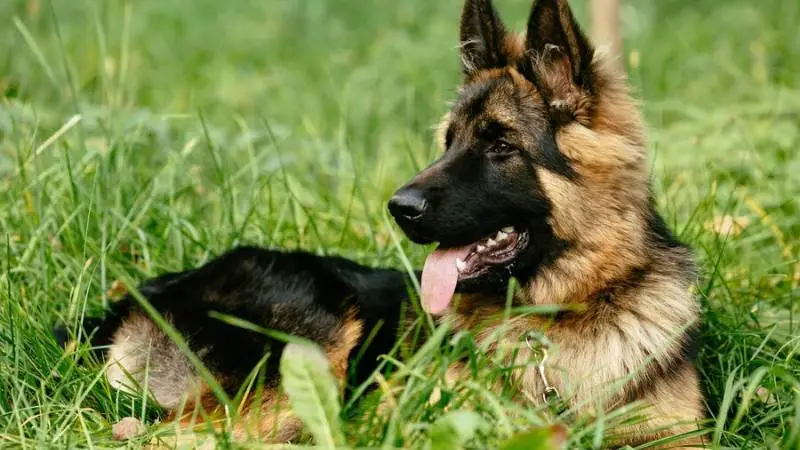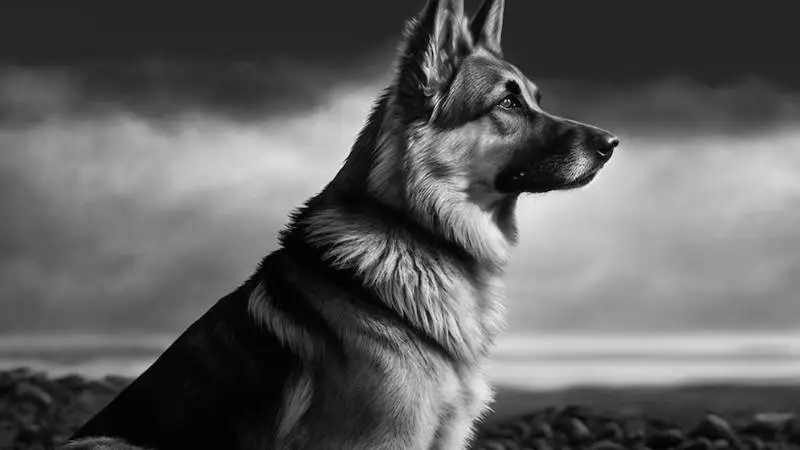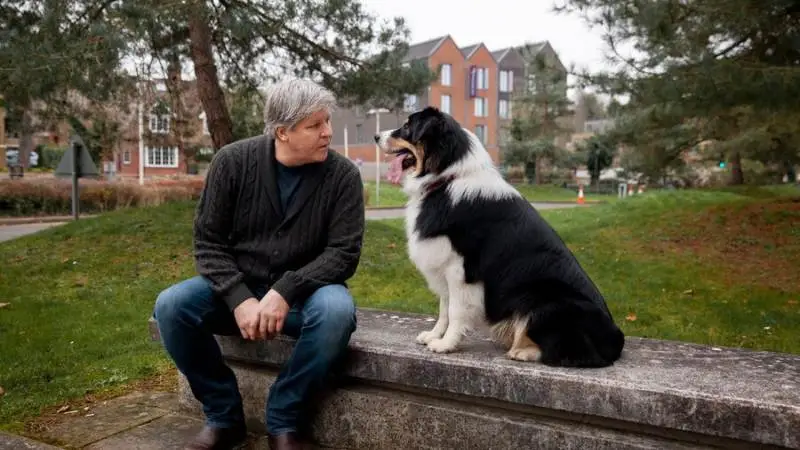They are unveiling 5 unique German Shepherd varieties! These intelligent, loyal dogs come in five excellent types, each with unique traits. We’ll explore their looks, personalities, and what makes them perfect for specific roles—family companions, working partners, or show stars. Get ready to discover the fascinating diversity within this beloved breed.
Key terms such as “German Shepherd,” “varieties,” “characteristics,” “intelligence,” “loyalty,” and “versatility” are central to our discussion. Understanding these key aspects will help anyone, from potential dog owners to canine enthusiasts, grasp the diversity within this breed, make informed decisions, or appreciate the depth of this breed’s lineage.
Whether you’re interested in a family companion, a working dog, or a show dog, these five German Shepherd varieties offer a fascinating glimpse into the breed’s adaptability and multifaceted nature.
History
The world of German Shepherds is vast and varied, with the breed’s evolution since its late 1800s inception by Max von Stephanitz resulting in several distinct types. Initially bred for intelligence and workability, the German Shepherd has diversified into five main types, each with unique characteristics and roles.
This article explores these types, from the well-known to the less-known, and demystifies the breed’s varying coat colors, aiding in the identification and understanding of each German Shepherd variety.
Here’s a summarized table to illustrate the key points:
| Aspect | Details |
| Breed Origin | Developed in the late 1800s by Max von Stephanitz. |
| The Registered Dog | Horand von Grafrath, setting the breed standard. |
| Evolution | Led to diverse types with specific traits and roles. |
| Types Covered | 5 main types, from universally accepted to less known. |
| Coat Colors | Various, sometimes causing identification challenges. |
5 Unique German Shepherd Varieties
The five types of German Shepherds include:
- Traditional German Shepherd
- American Show Line German Shepherd
- European Working Line German Shepherd
- East German DDR German Shepherd
- Czech Working Line German Shepherd
Traditional German Shepherd

The traditional German Shepherd is known for its versatility, intelligence, and loyalty. Originating in Germany, this breed was designed for herding and protection. They are well-built, with a tan and black coat, often showcasing the classic German Shepherd appearance.
Renowned for their trainability and work ethic, these dogs are ideal for various roles, including service, police, and family pets. Their strong protective instincts and obedient nature make them trusted and dependable companions.
Here’s a summarized table to illustrate the key points:
| Feature | Description |
| Origin | It is well built with a tan and black coat, embodying the classic look. |
| Appearance | Well-built with a tan and black coat, embodying the classic look. |
| Traits | It is well built with a tan and black coat, embodying the classic look. |
| Roles | Service, police work, and family companionship. |
| Characteristics | Trainable, obedient, and with strong protective instincts. |
American Show Line German Shepherd

The American Show Line German Shepherd, distinguished by its sloped back and elegant appearance, is tailored for dog shows, meeting the American Kennel Club (AKC) standards with its vibrant coat, often in black and tan. While bred for aesthetic appeal, these dogs maintain the breed’s intelligence, alertness, and loyalty, making them excellent family pets.
They exhibit a calmer temperament compared to working lines, making them suitable for family environments, yet they still need regular exercise and mental engagement. Their striking looks and friendly nature make them favourites on show circuits and in homes.
Here’s a summarized table to illustrate the key points:
| Feature | Description |
| Origin | It is ideal for show rings and as family companions. |
| Appearance | Sloped back, well-defined angles, and varied colors. |
| Traits | Friendly, calm, with less working drive. |
| Roles | Ideal for show rings and as family companions. |
| Characteristics | Prioritizes physical appearance, meeting show standards. |
European Working Line German Shepherd

The West German Show Line German Shepherd is designed to balance work and looks, closely following the breed’s original standards by Max von Stephanitz. They have a functional build with less back slope, suited for endurance and agility, and their coats feature rich colours, often black and tan.
Renowned for their excellent temperament, these dogs are intelligent, eager, and versatile, excelling in service and family companionship roles. They blend show-quality beauty with strong working capabilities, making them ideal for those wanting a pet that offers aesthetics and practicality.
With a balanced temperament, being protective yet social, they are great companions, embodying the breed’s working heritage and aesthetic appeal.
Here’s a summarized table to illustrate the key points:
| Feature | Description |
| Breeding Goal | Balance between working ability and physical appearance. |
| Conformation | Functional structure with less back slope for agility. |
| Coat | Varied colors, with rich pigments and classic patterns. |
| Temperament | Suitable for service, search and rescue, sports, and family pets. |
| Roles | Suitable for service, search and rescue, sports, and as family pets. |
| Characteristics | It combines show ring beauty with robust health and working ability. |
East German DDR German Shepherd

Here’s a summarized table to illustrate the key points:
| Feature | Description |
| Origin | I was born in East Germany for demanding work roles. |
| Build | Sturdy, muscular, with a dense coat, often dark. |
| Purpose | Developed for tasks like border patrol; highly disciplined and alert. |
| Temperament | Intelligent, loyal, and protective, with strong guarding instincts. |
| Suitability | Ideal for work requiring endurance and resilience, also a dependable companion. |
| Characteristics | Known for its seriousness and strong work ethic, it is suitable for demanding environments. |
Czech Working Line German Shepherd

The Czech Working Line German Shepherd, bred in the Czech Republic, is known for its strong work ethic and durability. These dogs are robust, powerful, and often used in military and police work.
They are highly intelligent, trainable, and have a strong work drive, making them excellent for demanding tasks. Their coat is usually darker and they are known for their high energy and protective nature, making them great for active roles and as loyal companions.
Here’s a summarized table to illustrate the key points:
| Feature | Description |
| Origin | Bred in the Czech Republic for demanding work. |
| Build | Powerful and robust, suited for intense activities. |
| Roles | It is used in military and police work due to its high trainability and work drive. |
| Temperament | Intelligent, energetic, and protective. |
| Characteristics | Known for darker coats and strong loyalty, it is ideal for active and working environments. |
The differences and considerations
German Shepherd types vary in appearance and abilities, tailored to their roles. West German working lines are sturdy and functional, with darker coats for demanding work. Czech Working Lines have a strong, muscular build with sable or black coats, bred for endurance and strength in tasks like border patrol.
European show lines possess a more sloped back and refined appearance, with richly colored coats for show standards, yet remain intelligent and trainable. While all lines share intelligence, loyalty, and adaptability, working lines exhibit a stronger work drive, suited for active tasks.
In contrast, European show lines are more balanced, ideal for family life and competitive showing, merging aesthetics with functionality.
Is it a good idea to adopt a German Shepherd?
Adopting a German Shepherd requires understanding their need for mental and physical activity, due to their high intelligence and energy. Potential owners should commit to regular training, socialization, and exercise.
These dogs are ideal for active individuals or families, thriving in environments where they can engage in activities like training and agility. While German Shepherds are loyal, protective, and excellent as family pets, they need consistent care and training, especially early on, to prevent behavioral issues. It’s vital to assess whether one can meet the demands of raising a German Shepherd to ensure a positive relationship.
Conclusion
Choosing between the German Shepherd types—West German Working, Czech Working, and European Show Lines—requires understanding their traits, temperament, and needs. Prospective owners should consider their lifestyle and what they seek in a dog.
Those wanting an energetic, work-focused dog might prefer the working lines, while others desiring a mix of beauty and functionality could opt for the European Show Line, especially for dog shows. All German Shepherds need love, discipline, and mental and physical activity. An informed decision ensures a fulfilling relationship, highlighting the breed’s loyalty and excellence.
FAQs
Which breed of German Shepherd is best?
The best breed of German Shepherd depends on the intended purpose. Working line German Shepherds excel in tasks requiring strength and agility, while show line breeds are known for conforming to breed standards and temperament. Amateur owners might prefer the American lines for their balanced traits.
How many types of German Shepherds are there?
There are primarily two types of German Shepherds: the working line and the show line. The working line is bred for its intelligence and ability to work, while the show line is bred for its appearance and conformity to breed standards.
What are the 7 classifications of German Shepherds?
The seven classifications of German Shepherds include working lines, show lines (American and European), West German working lines, East German DDR working lines, Czech working lines, and British lines.
Each line has distinct characteristics catering to various roles, such as service, companionship, or show competitions. These differences reflect the breed’s versatility and adaptability to specific tasks and environments.
What is the rarest type of German Shepherd?
The Panda German Shepherd is one of the rarest types of German Shepherd. This distinctive variant is characterized by its unique piebald coloring, encompassing white patches amidst the standard coloration. Its rarity is attributed to a specific genetic mutation.
